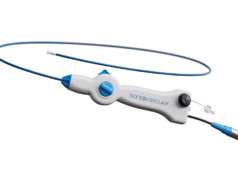
Daiichi Sankyo Europe GmbH has announced results from five analyses of 12-month data from ETNA-VTE (Edoxaban treatment in routine clinical practice in patients with venous thromboembolism), a non-interventional, post-authorisation safety study (PASS) evaluating edoxaban (known by the brand name Lixiana), a direct oral anticoagulant (DOAC).
In routine clinical practice in 4,595 (mean age 64) venous thromboembolism (VTE) patients, overall rates of bleeding and VTE recurrence were considered low by the study investigators’ assessment in a range of VTE sub-populations. Findings were presented during the International Society on Thrombosis and Haemostasis (ISTH) 2020 virtual congress (12–14 July).
“These real-world findings provide clinicians with additional evidence of edoxaban’s safety in specific VTE patient populations that are considered high-risk for bleeding, recurrent VTE or other cardiovascular events, or who have comorbidities,” said Alexander T Cohen, vascular physician and epidemiologist at Guy’s and St. Thomas’ Hospital, King’s College (London, UK) and study investigator.
“This is of particular significance for ageing patients and those who treat them, as the elderly are at greatest risk due to the high prevalence of predisposing comorbidities and acute illnesses, making edoxaban a viable treatment option for this population.”
Global ETNA-VTE results
A global subanalysis suggested that at 12 months, rates of recurrent VTE were not associated with increasing age, while major bleeding and all-cause mortality increased with age, as would be expected. However, most of the mortalities were not cardiovascular (CV)-related. Per year, globally:
- VTE recurrence occurred in 3.65% of patients aged <65, 2.83% of those aged ≥65–<75, 2.3% of those aged ≥75–<85, and 3.07% of those aged ≥85.
- ISTH-defined major bleeding occurred in 1.34% of patients aged <65, 3.16% of patients aged ≥65–<75, 2.97% of patients aged ≥75–<85, and 5.72% of patients aged ≥85.
- CV-related mortality occurred in 0.35% of patients aged <65, 1.08% of patients aged ≥65-<75, 1.96% of patients aged ≥75-<85, and 3.04% of patients aged ≥85.
ETNA-VTE Europe results
In the first of two European subanalyses, rates of major bleeding and VTE recurrence were considered to be low by the authors’ assessment in both patients with pulmonary embolism (PE), with or without deep vein thrombosis (DVT), and patients with DVT alone. Of note, patients with PE, with or without DVT, had a tendency towards a higher risk of mortality and bleeding events than those with DVT alone, but they also had higher risk baseline characteristics. Per year, in the European index VTE event group:
- Major bleeding occurred in 2.39% of patients with PE, with or without DVT, and 1.57% of patients with DVT alone.
- VTE recurrence of any kind occurred in 2.89% of patients with PE, with or without DVT, and 2.78% of those with DVT alone.
The second European subanalysis, which stratified patients by body mass index (BMI; BMI 18.5–<25 kg/m2 [normal weight], BMI 25–<30 kg/m2 [overweight], BMI ≥30 kg/m2 [obese]), showed that obesity did not substantially affect the risks of recurrent VTE and other bleeding complications. Per year, in the European BMI group:
- VTE recurrence occurred in 2.67% of patients overall (2.44%, 2.83%, and 2.71% respectively).
- Major bleeding occurred in 1.69% of patients overall (1.75%, 2%, and 1.11% respectively).
- All-cause mortality occurred in 2.16% of patients overall (2.97%, 1.77%, and 2.39% respectively).
“These are important new real-world data, which add to edoxaban’s growing knowledge base supporting its use in a range of VTE patients,” said Wolfgang Zierhut, head Antithrombotic and Cardiovascular Therapeutic Area at Daiichi Sankyo Europe. “At Daiichi Sankyo, we are committed to continuing the evaluation of safety and efficacy of edoxaban in a broad range of cardiovascular patients through ETNA-VTE and other studies included in the Edoxaban Clinical Research Programme.”
Additional findings from two further Global and European ETNA-VTE showed that high versus low bleeding risk (as identified by the VTE-BLEED score) was associated with similar VTE recurrence risk but higher all-cause and cardiovascular mortality and incidences of any bleeding type or category, and that edoxaban is largely used adequately in real-world practice in Europe, respecting the recommendations for treatment initiation, dosing, and dose adjustments in special patient populations.
ETNA-VTE is part of the global ETNA programme, which is the largest and most comprehensive repository of routine clinical practice data on the use, safety and effectiveness of a single DOAC in patients with VTE. This study is also one of more than 10 randomised, controlled trials (RCTs), registries and non-randomised clinical studies that comprise the Edoxaban Clinical Research Programme.












